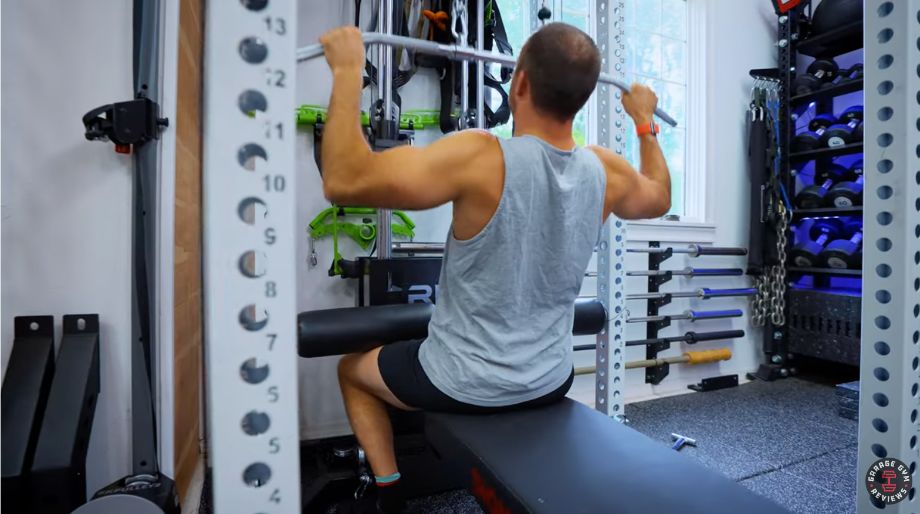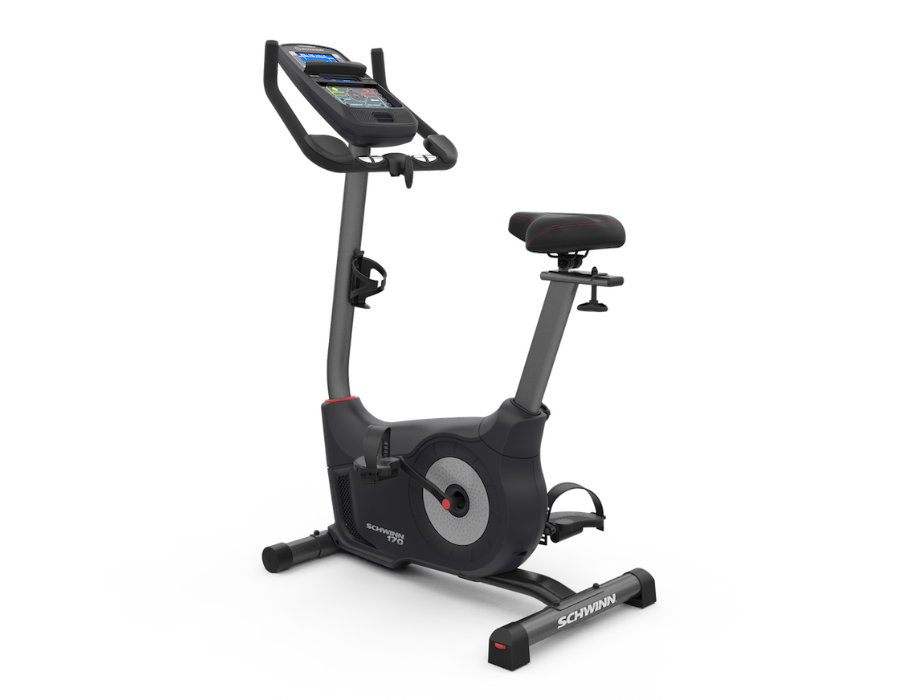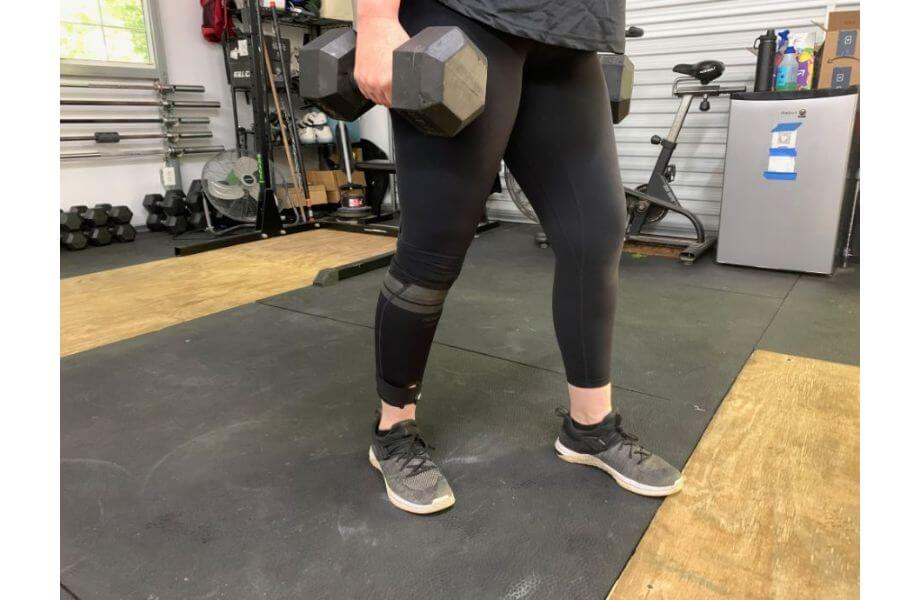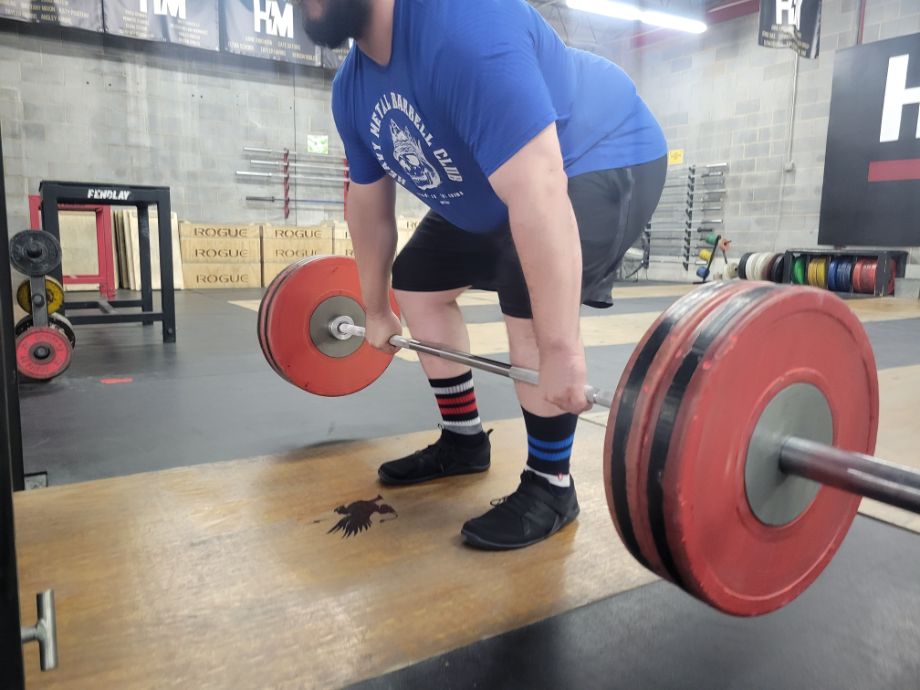Just behind leg day, back exercises may be the most intense sessions in the gym. The lats, rhomboids, and traps are able to handle a huge workload. We know this anecdotally from phrases like “back-breaking work” and the famous Ernie Ford lyric about coal mining.
If you’re not interested in working on a farm or in a steel mill as part of your fitness journey, here are 13 exercises for a muscle-growing lat workout that don’t involve hard labor.
What Are Your Lats?
The latissimus dorsi (or “lats” in like, the vernacular of our time, man) are the “wings” of the upper body. Vaguely triangle shaped, the lats are the broad muscles descending down the torso1. Big lats are what give you that nice V-shaped upper back.
If you look at a front shot of Dorian Yates (known for the absurd intensity of his lat workouts), it looks like somebody surgically inserted two footballs below his armpits.
The footballs are his lats.
Why Train Your Lats
Whether your goal is to look good in a tight T-shirt, to have functional movement ability, or to push the envelope with your strength training, directly training the lats is extremely valuable.
I was always told there are two things you can look at on a person to tell how strong they are: the glutes, and the back muscles. Latissimus dorsi not only aid in rowing and carrying movements, they also provide a stable base for all pressing movements.
It’s true in film school and it’s true in strength training: Your agonist is only as strong as your antagonist2.
The Best Lat Workouts to Put in Your Workout Routine
Ready to spread those wings and fly? Give these exercises a try.
Lat Pulldown
Why Do It: The lat pulldown is a great way to perform a vertical pulling motion without totally overloading it. Unless you can knock out multiple sets of 20 chin-ups, the intensity of the motion makes it hard to work in hypertrophy rep ranges.
How to Do It:
- Take a grip on the cable machine attachment before you sit down.
- Slowly work your way into place while holding the attachment.
- Lean back slightly, but maintain a vertical pulling angle.
- Think “wide” and try to move the weight stack without using your arms at all to put more focus on the lats3.
- Pull the weight down to your upper chest area.
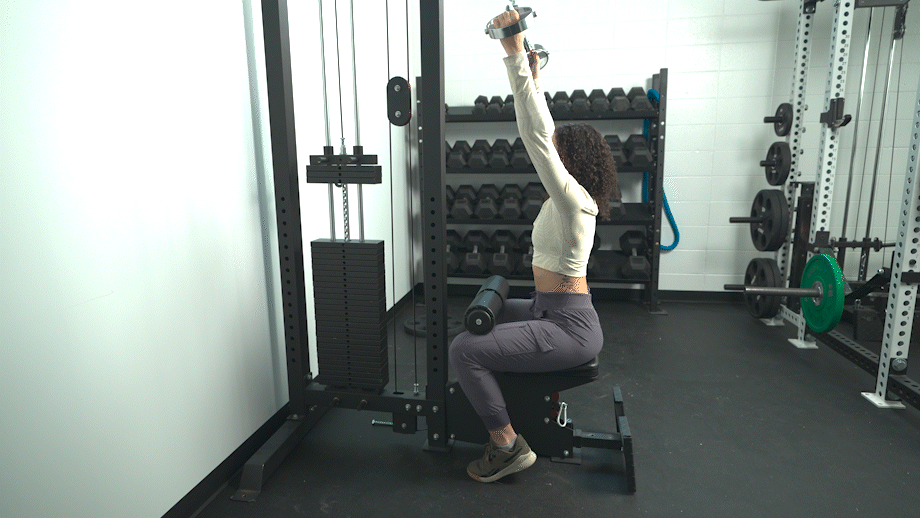
Pull-Up and Chin-Up
Why Do It: Very much in the opposite vein as the lat pulldown, pull-ups let you focus on movement and strength rather than targeted muscle activation. Pull-ups are not only great lat workouts, but a basic life saving skill.
Resistance bands can be looped over the pull-up bar to make the movement lighter, but the focus should be on progressing to full bodyweight.
How to Do It:
- Find a pull-up bar, tree branch, I-beam, or roof ledge.
- Start with a shoulder grip overhand grip and try to bring your chin over the bar.
- Control yourself down completely until your arms are straight
- Pause for a second before pulling back up. Doing these from a dead-stop with full range of motion is more effective and easier on the elbows.
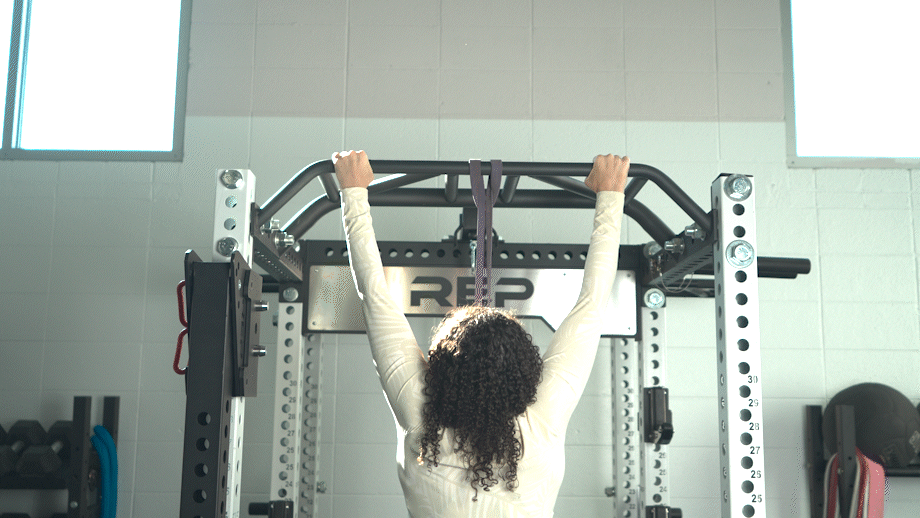
Dumbbell Row
Why Do It: The one-arm dumbbell row is maybe the most primal of the best lat exercises listed here. This is one motion you can really just wail away on with body English and “cheating.” Don’t be afraid to toss on straps and use something heavy. This hits your rhomboids hard in addition to your lats.
How to Do It:
- Start with a dumbbell in one hand and your feet staggered with your opposite foot forward.
- Place the hand not holding the dumbbells on a bench, dumbbell rack, or power rack. Put some of your weight on it.
- You should be bent over with your torso somewhere between a 45-degree and 90-degree angle.
- Hang the weight down and work on feeling the stretch at the bottom.
- Squeeze your shoulder blade in and focus on pulling the weight up with the part of the muscle you felt in the stretch.
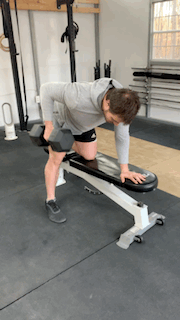
Dumbbell Pullover
Why Do It: You get a great lat stretch with these (and therefore a nice range of motion). You can use these as a warm-up to your back workout, in between sets of barbell rows to help you really “feel” your lats, or as a finisher to toast your back after a bunch of pulling movements.
For a dumbbell pullover to work, you need to think of your lats as a fulcrum. Otherwise it turns into a really ugly skullcrusher.
How to Do It:
- Grab a dumbbell and a bench.
- Lie down on the bench.
- Hold the dumbbell by one of the “bells” and extend your arms above your head.
- The weight should pull your lats in a pleasant stretch.
- Keeping your arms straight so as to not use your triceps, pendulum the weight up so it is straight above your head.
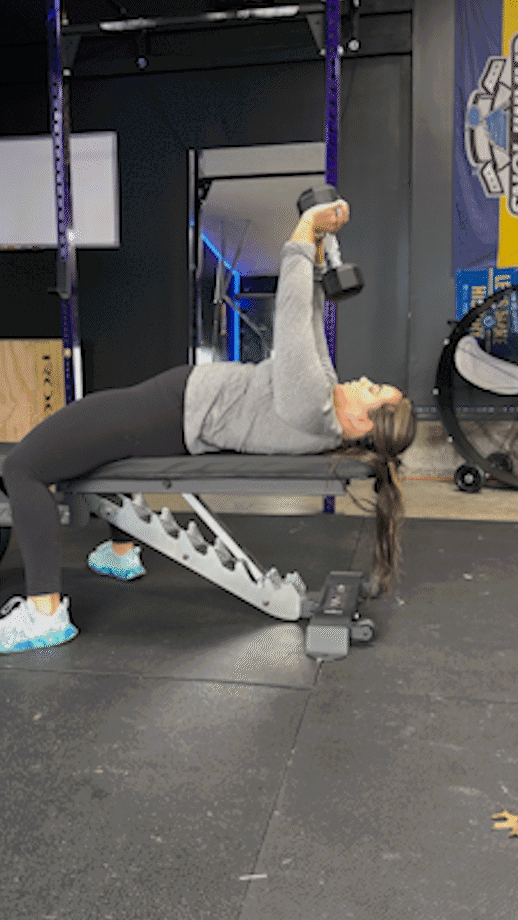
Renegade Row
Why Do It: Fans of Lorenzo Lamas will love the renegade row. It may not give you flowing, feathered locks, or a good-hearted-bad-boy cliche vibe, but it is a heck of an upper-body conditioning workout.
You’ll really need to brace hard during the rowing section below to keep from falling over. Your triceps may fatigue before your lats, but that’s ok.
How to Do It:
- Take a pair of dumbbells and throw them on the ground. Seriously, you’re a renegade.
- Set up in a push-up position with your hands on the dumbbells in a neutral position. Neutrality is so renegade.
- Do one push-up.
- Row the dumbbell in your right hand to your chest.
- Row the dumbbell in your left hand to your chest.
- Buy a Harley and travel the country helping people.
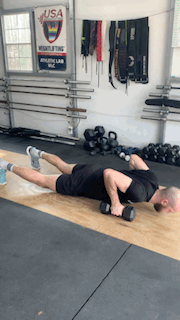
Gorilla Row
Why Do It: With the gorilla row, you get to alternate rowing and stabilizing each arm. Similar to the one-armed dumbbell bench press, this dumbbell lat workout forces you to brace hard with your abs and lower back to stabilize your torso.
How to Do It:
- Set two kettlebells on the ground slightly in front of you and in between your legs.
- Bend down like in a deadlift and grab both kettlebells.
- Keeping your back angle, row one kettlebell up, squeezing your rear delt at the top.
- Return that hand to the ground and repeat with the other.
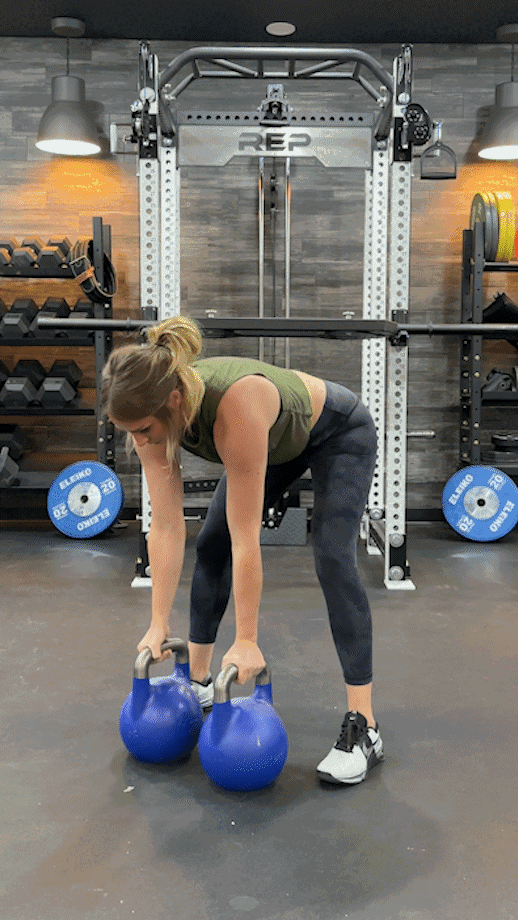
Barbell Bent-Over Row
Why Do It: Because you want to build muscle and get stronger. Seriously, the basic barbell bent-over row is the complete package4. The bent over row will work your lats, trapezius, rhomboids, rear deltoids, abs, and lower back. If you only ever did one row variation, it would have to be the BOR.
How to Do It:
- Set up just like a deadlift with feet under the barbell about hip width.
- Use an overhand grip for a convention bent-over row.
- Deadlift the bar to your hips, then slow descend until the bar is knee height.
- Keep your lower back straight. You should be as close to a 90-degree angle as possible.
- Row the bar to your sternum (not bellybutton).
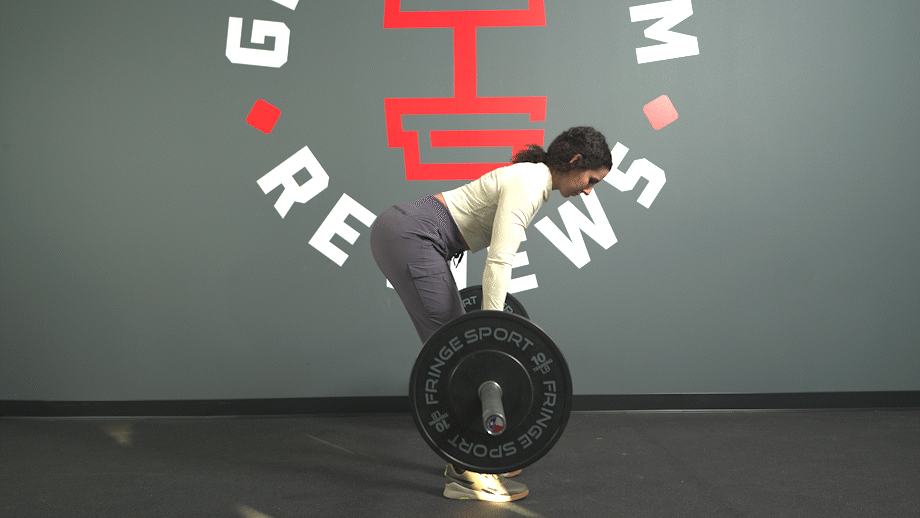
Pendlay Row
Why Do It: Named after weightlifting coach Glenn Pendlay, these rows are a “dirtier” version of the barbell bent-over row. They are kind of like a horizontal high-pull and can help with explosive strength as well as building muscle over the entire posterior chain.
How to Do It:
- Set up the same way as with a bent-over row, but the starting position for this is with the bar on the ground.
- Using some hip action, throw the bar off the ground explosively.
- Row the bar to your sternum, continuing the motion starting with the hips.
- Return the bar to the ground after every rep.
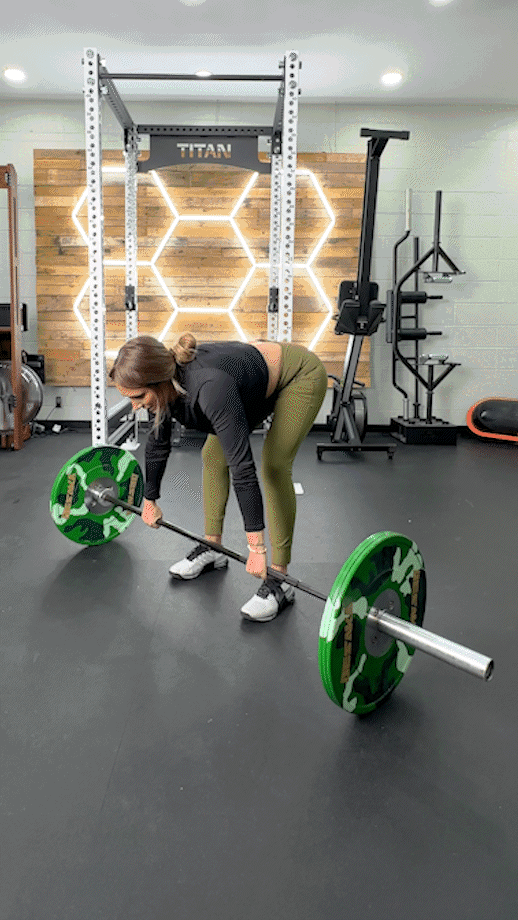
Deadlift
Why Do It: The king of all exercises, and therefore the king of back exercises, the deadlift is one of the best muscle building back exercises partially because of the amount of weight you can load onto the bar. If your workout routine doesn’t include some variety of deadlift, I’m pretty sure you’re doing it wrong. You can perform a deadlift with just about any weighted implement.
How to Do It:
- Set a bar on the ground with 18” plates, or grab two dumbbells, or two kettlebells, or a sandbag … you get the picture.
- Your starting position is with your feet under the bar; if you aren’t using a bar, take no wider a stance than with your feet shoulder-width apart.
- Grab the weight and set your hips in roughly a half-squat position.
- Push your hips back so your lower back stays neutral.
- Squeeze your upper back hard and don’t let it round forward.
- Keeping your arms straight, drive your legs into the ground to get the weight started moving.
- Finish by using the hamstrings and driving the glutes forward to bring the weight to your hips.
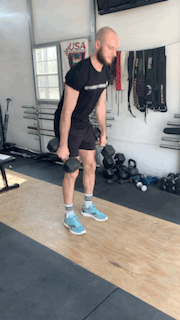
Cable Row
Why Do It: Range of motion is one of the traits of exercises used to build muscle, and cable machines can offer huge range without spinal loading or taxing stabilizer muscles (like with the dumbbell lat movements). You can do single-arm or double arm versions of this, with the double arm version sometimes called a low row (described below).
How to Do It:
- This is the part of the cable machine that looks like an ERG rowing machine.
- Set up like you would on the ERG, but grab the handle and fully extend your legs.
- Without bending your knees, allow the weight to pull your back forward into a horizontal lat stretch.
- Squeeze your shoulder blades together and pull your rear deltoids back to row the attachment into your torso.
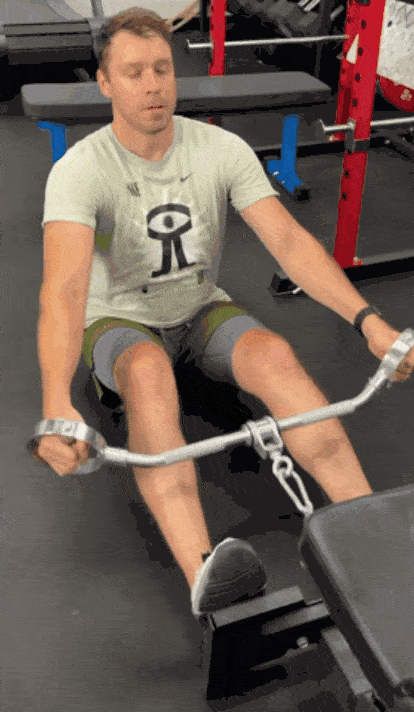
Landmine Row
Why Do It: The unfortunately named attachment is particularly awesome for home gym owners without an abundance of space for machines. It can simulate a T-bar machine without a large footprint.
If you don’t have a landmine, you can just set a bar up in a corner.
How to Do It:
- Use smaller diameter plates to get a bigger range of motion.
- Straddle the bar and with a staggered stance.
- You’re going to grab the collar or the bar with one hand and row that to your chest.
- You can rest your free hand on your front knee for balance.
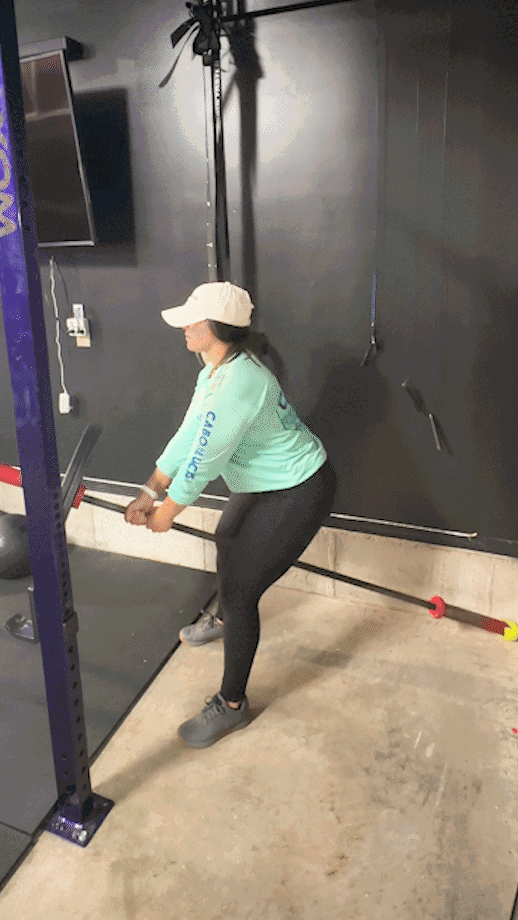
Inverted Row
Why Do It: This is a great alternative to chin-ups for beginners who are still learning to master bodyweight movements. Along with the barbell row, it is one of the lat exercises that mimics the movement pattern of the bench press, which can both help balance out the body (if bench pressing is a thing you do too much of) and help stabilize your body to increase your bench press ( if bench pressing is a thing you care too much about).
This can be done with suspension straps, jungle gyms, or really any horizontal bar. Below are instructions for using a Smith machine.
How to Do It:
- Pretend you are doing wide grip pull-ups and take that same grip.
- The starting position is on the ground under the bar with your feet out in front of you and weight on your heels (or flat-footed if being on the heels is too hard).
- Pretend (again) you are bench pressing, and bring your chest to the bar exactly where the bench press would hit.
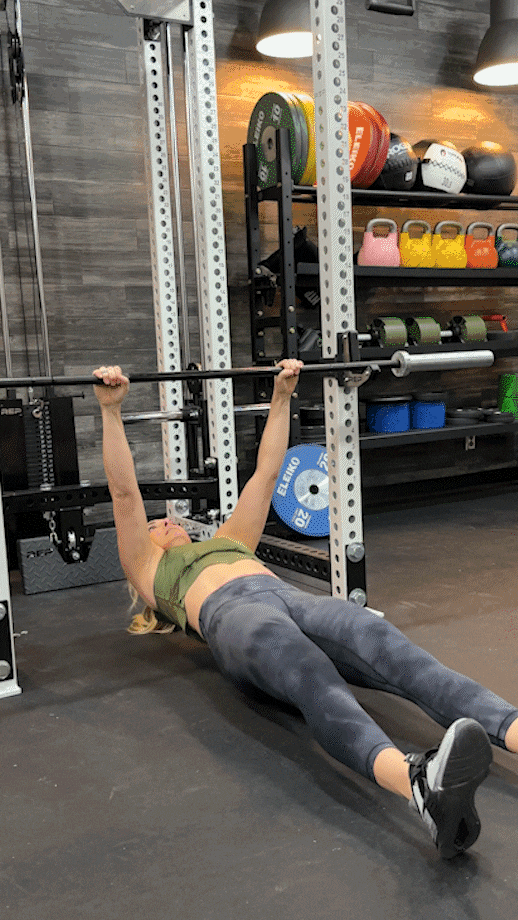
FAQs: Lat Workout
What are common mistakes with lat pulldown?
The most common thing is pulling with your arms. People will feel a pump, or even a sharp pain, in their biceps rather than using the power of the mind muscle connection5 to focus on the latissimus dorsi muscles.
The other common mistake is going way too heavy and using a full body heave to move the entire stack. Look, I love going crazy with free weight rows (I’m in the “if it moves it’s a rep” camp on that), but the lat pulldown is a hypertrophy exercise best done with control and focus. Getting a nice stretch at the top and a big contraction at the bottom is key.
How do you train your lats effectively?
The lat muscles, maybe more than any other muscle group, can benefit from being trained in a variety of modalities6. You can use a mix of horizontal and vertical pulling movements, as well as training the lats statically (like when you hold your back straight under load in a deadlift).
I like to use free weight movements where you can really throw around the weight; power cleans, bent over rows, heavy dumbbell rows. Use a strength training mindset when doing these lifts; the lats are going to get hit hard, but you still want to make these full body movements.
With machines it’s the opposite. Lat pulldowns, low cable rows, or any row variation that uses a pulley should be trained with a bodybuilding mindset. Focus on moving the weight with the specific muscle you are trying to work, and really control the weight.
How many times should I workout lats?
Some people recommend training lats every day. If you do this you have to be smart and understand that doesn’t mean maxing out your block pull deadlift every day.
Here is a challenge to illustrate this: try to do barbell movements (squat, clean, bench press, etc.) without using your lats. They stabilize your torso whenever your body is placed under load and, along with abs, are a foundation of full body strength.
If the focus of your training is compound free weight exercises, you will train lats every day whether you want to or not.
References:
1. Jeno SH, Varacallo M. Anatomy, Back, Latissimus Dorsi. [Updated 2022 Apr 5]. In: StatPearls [Internet]. Treasure Island (FL): StatPearls Publishing; 2022 Jan-. Available from: https://www.ncbi.nlm.nih.gov/books/NBK448120/
2. Robbins DW, Young WB, Behm DG, Payne WR. Effects of agonist-antagonist complex resistance training on upper body strength and power development. J Sports Sci. 2009 Dec;27(14):1617-25. doi: 10.1080/02640410903365677. PMID: 19967584.
3. Snyder BJ, Leech JR. Voluntary increase in latissimus dorsi muscle activity during the lat pull-down following expert instruction. J Strength Cond Res. 2009 Nov;23(8):2204-9. doi: 10.1519/JSC.0b013e3181bb7213. PMID: 19826307.
4. Fenwick CM, Brown SH, McGill SM. Comparison of different rowing exercises: trunk muscle activation and lumbar spine motion, load, and stiffness. J Strength Cond Res. 2009 Mar;23(2):350-8. doi: 10.1519/JSC.0b013e3181942019. PMID: 19197209.
5. Calatayud J, Vinstrup J, Jakobsen MD, Sundstrup E, Brandt M, Jay K, Colado JC, Andersen LL. Importance of mind-muscle connection during progressive resistance training. Eur J Appl Physiol. 2016 Mar;116(3):527-33. doi: 10.1007/s00421-015-3305-7. Epub 2015 Dec 23. PMID: 26700744.
6. Krzysztofik M, Wilk M, Wojdała G, Gołaś A. Maximizing Muscle Hypertrophy: A Systematic Review of Advanced Resistance Training Techniques and Methods. Int J Environ Res Public Health. 2019 Dec 4;16(24):4897. doi: 10.3390/ijerph16244897. PMID: 31817252; PMCID: PMC6950543.


